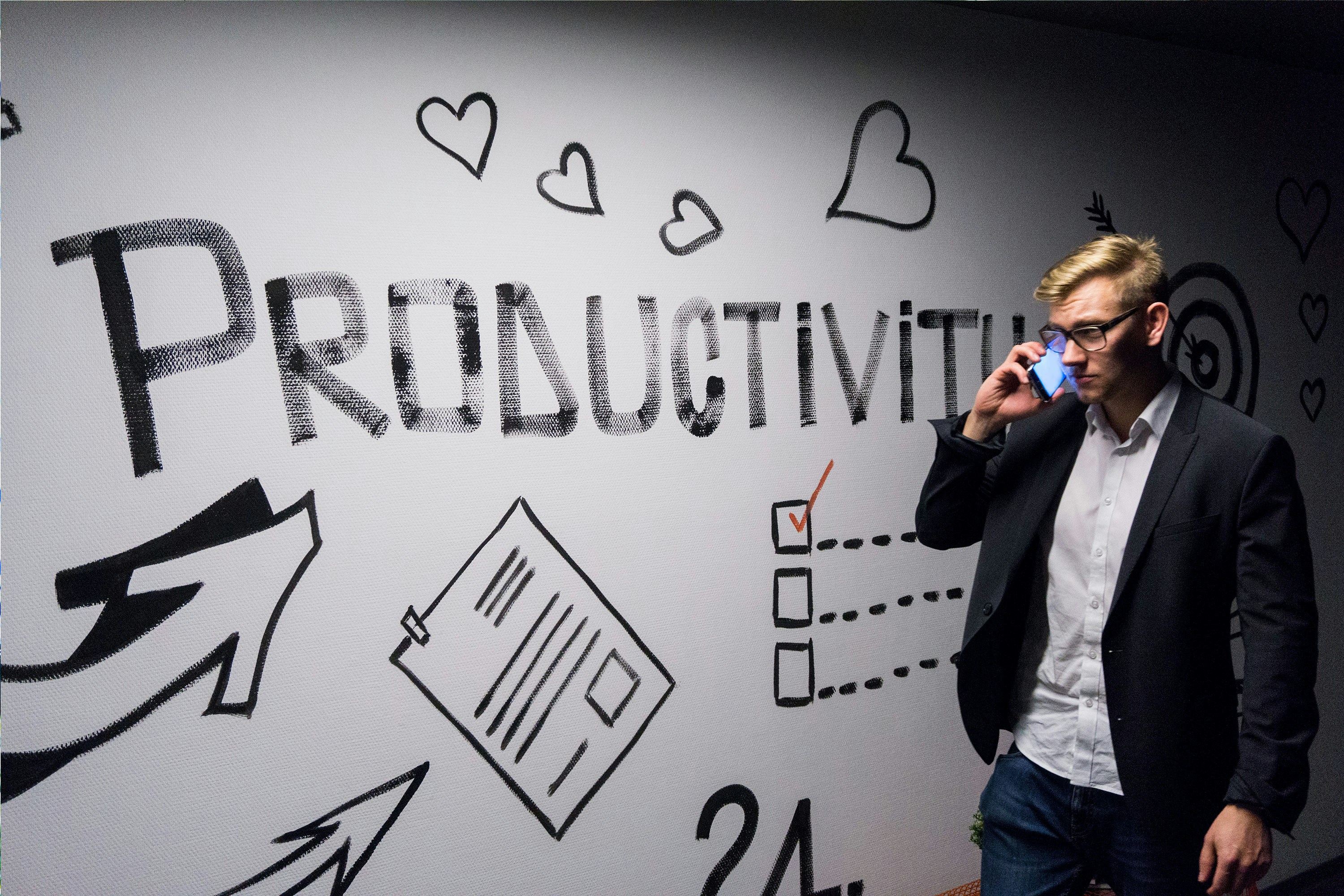What Are Effective Ways To Shorten Meetings And Make Them More Productive?
In this article, you will learn about some effective strategies to make your meetings shorter and more productive. Meetings can often be time-consuming and unproductive, but by implementing the right techniques, you can ensure that your meetings are efficient and achieve their goals.
One effective way to shorten meetings is to set clear objectives and agendas beforehand. By clearly defining what needs to be accomplished in the meeting, you can stay focused and avoid deviating into unrelated discussions. Additionally, it can be helpful to allocate specific time slots for each agenda item to ensure that you stay on track and avoid unnecessary tangents. Another way to make meetings more productive is to encourage active participation from all attendees. By creating an inclusive environment where everyone feels comfortable sharing their ideas and perspectives, you can foster collaboration and make better use of everyone’s time.
Setting Clear Objectives
Identifying the purpose of the meeting
In order to make a meeting more effective and efficient, it is crucial to have clear objectives. Before scheduling a meeting, take the time to identify the purpose of the meeting. Ask yourself what you hope to accomplish or discuss during the meeting. This will help you determine if a meeting is truly necessary or if the objectives can be achieved through other means such as email or a quick phone call.
Establishing specific goals to be achieved during the meeting
Once you have identified the purpose of the meeting, it is important to establish specific goals that you hope to achieve. These goals should be tangible, measurable, and time-bound. By setting clear goals, you provide a framework for the meeting and ensure that everyone is on the same page. This not only helps keep the meeting focused, but it also allows participants to better prepare and contribute to the discussion.
Preparing an Agenda
Listing the topics to be discussed
One of the most effective ways to shorten meetings and make them more productive is by preparing a well-structured agenda. An agenda serves as a roadmap for the meeting, outlining the topics that will be discussed and the order in which they will be addressed. By listing the topics to be discussed, you ensure that the meeting stays on track and relevant to the objectives.
Setting time limits for each agenda item
In addition to listing the topics to be discussed, it is also important to set time limits for each agenda item. This helps prevent discussions from dragging on and ensures that all topics are given equal attention. By allocating a specific amount of time for each agenda item, you create a sense of urgency and encourage participants to stay focused and concise.
Inviting Relevant Participants
Selecting individuals who are directly involved or have valuable input
When inviting participants to a meeting, it is important to carefully consider who should be included. Only invite individuals who are directly involved in the topics being discussed or who have valuable input to provide. By inviting the right people, you can ensure that the meeting is productive and that everyone’s time is used effectively.
Avoiding unnecessary attendees
On the flip side, it is equally important to avoid inviting unnecessary attendees. Including individuals who do not have a direct stake in the meeting’s objectives can lead to off-topic discussions and unnecessary delays. By keeping the attendee list focused and concise, you can maximize efficiency and ensure that the meeting is productive.
Implementing Time Management Strategies
Starting and ending the meeting on time
One of the biggest time wasters in meetings is when they start late or run over the allotted time. To make meetings more effective, it is crucial to start and end the meeting on time. This shows respect for everyone’s time and sets a precedent for punctuality. If necessary, consider scheduling buffer time between meetings to allow for unexpected delays or transitions.
Keeping discussions concise and to the point
Another effective time management strategy is to keep discussions concise and to the point. Encourage participants to articulate their thoughts clearly and succinctly. Avoid going off on tangents or engaging in lengthy debates. By keeping discussions focused, you can ensure that the meeting stays on track and that time is used efficiently.
Utilizing Technology
Using collaborative tools for document sharing and real-time updates
In today’s digital age, utilizing technology can greatly enhance the productivity of meetings. Consider using collaborative tools for document sharing and real-time updates. This allows participants to access and edit documents simultaneously, eliminating the need for multiple versions and follow-up emails. By using technology to streamline the sharing of information, you can save time and keep everyone in the loop.
Employing video conferencing for remote participants
For meetings that involve remote participants, video conferencing can be a valuable tool. It allows for more effective communication and collaboration, as participants can see and hear each other in real time. This helps mitigate the challenges of distance and ensures that remote participants feel included and engaged in the meeting.
Encouraging Active Participation
Creating an inclusive and non-intimidating environment
To make meetings more productive, it is important to create an inclusive and non-intimidating environment. Encourage an open and respectful atmosphere where everyone feels comfortable sharing their ideas and opinions. Foster a culture of collaboration and teamwork, where all voices are valued and heard.
Requesting input and suggestions from all participants
In order to maximize the value of a meeting, it is important to actively seek input and suggestions from all participants. Encourage everyone to contribute to the discussion and share their unique perspectives. By actively engaging participants, you not only increase the likelihood of making better decisions but also foster a sense of ownership and commitment among the attendees.
Limiting Distractions
Minimizing interruptions, such as phone calls or unrelated discussions
Distractions can greatly impede the productivity of a meeting. To minimize interruptions, establish clear guidelines at the beginning of the meeting. Ask participants to silence their phones and refrain from engaging in unrelated discussions. By setting expectations and minimizing distractions, you can keep the meeting focused and on track.
Creating a quiet and focused atmosphere
In addition to minimizing external distractions, it is equally important to create a quiet and focused atmosphere within the meeting space. Choose a location that is free from noise and other distractions. Consider using visual aids or presentation tools to help participants stay engaged and focused on the discussion at hand.
Allocating Time for Breaks
Allowing brief intervals for participants to refresh and recharge
While it may seem counterintuitive, allocating time for breaks can actually make meetings more productive. Allowing participants to take brief intervals to refresh and recharge can help enhance concentration and attentiveness. Schedule short breaks at appropriate intervals to give participants a chance to stretch, grab a drink, or simply clear their minds.
Enhancing concentration and attentiveness
Breaks help prevent burnout and increase overall energy levels, resulting in heightened concentration and attentiveness. By incorporating breaks into the meeting agenda, you create a more dynamic and engaging environment, leading to increased productivity and better decision-making.
Assigning Roles and Responsibilities
Designating a facilitator to manage the meeting flow
To ensure that a meeting runs smoothly and efficiently, it is helpful to designate a facilitator. This person is responsible for managing the meeting flow, keeping discussions on track, and ensuring that objectives are met. The facilitator can also help enforce time limits, manage interruptions, and encourage active participation from all attendees.
Appointing a note-taker to record important points and action items
In addition to a facilitator, it is also beneficial to appoint a note-taker who will be responsible for recording important points and action items. This ensures that nothing is overlooked or forgotten and provides a reference for follow-up actions after the meeting. By assigning roles and responsibilities, you establish accountability and help streamline the meeting process.
Encouraging Follow-Up Actions
Clarifying action steps and deadlines for each participant
To ensure that the objectives of a meeting are effectively implemented, it is important to clarify action steps and deadlines for each participant. At the end of the meeting, summarize the key decisions and assign specific tasks to individuals. Clearly communicate expectations and establish deadlines to prevent miscommunication and ensure accountability.
Emphasizing accountability and progress tracking
To further enhance productivity, it is crucial to emphasize accountability and progress tracking. Regularly check in with participants to ensure that tasks are being completed as planned. Provide updates on the progress of the action items and offer support or resources as needed. By keeping everyone accountable, you can ensure that the outcomes of the meeting are achieved in a timely manner.
Evaluating Meeting Effectiveness
Collecting feedback from participants to identify areas for improvement
To continually improve the effectiveness of meetings, it is important to collect feedback from participants. Ask for their input on what worked well and what could be improved. Use this feedback to identify areas for improvement and make adjustments for future meetings. By actively seeking feedback, you demonstrate a commitment to continuous improvement and create a culture of learning within the organization.
Reviewing the meeting’s impact on decision-making and productivity
In addition to collecting feedback, it is also important to review the impact of the meeting on decision-making and productivity. Assess whether the objectives were met, if the discussion was fruitful, and if progress was made towards the desired outcomes. This evaluation helps determine the value of the meeting and provides insights for making future meetings more effective.
Implementing Meeting Etiquette
Setting guidelines for respectful and professional behavior
To create a positive and productive meeting environment, it is important to set guidelines for respectful and professional behavior. Establish expectations for active listening, avoiding interruptions, and treating all participants with respect. By outlining these guidelines at the beginning of the meeting, you set the tone for a collaborative and inclusive discussion.
Ensuring equal opportunity for everyone to speak and be heard
In addition to respectful behavior, it is also important to ensure that everyone has an equal opportunity to speak and be heard. Encourage participants to actively contribute to the discussion and create space for diverse perspectives. Foster an environment where everyone feels comfortable sharing their ideas and opinions, regardless of their position or seniority.
Providing Timely Meeting Summaries
Sending concise summaries to all participants after the meeting
To ensure that the outcomes of a meeting are well-documented and understood, it is important to provide timely meeting summaries. These summaries should be concise and highlight the key decisions, next steps, and responsibilities that were discussed during the meeting. By sharing meeting summaries with all participants, you create a reference point for future actions and ensure that everyone is aligned.
Highlighting key decisions, next steps, and responsibilities
Meeting summaries should prioritize key decisions, next steps, and responsibilities. This helps keep everyone informed and on track, even after the meeting has concluded. Clearly communicate any action items, deadlines, or follow-up tasks that were assigned during the meeting. By highlighting these important details, you help ensure that the outcomes of the meeting are effectively implemented.
Conclusion
By implementing these effective strategies, meetings can be shortened and made more productive. Setting clear objectives, preparing a well-structured agenda, inviting relevant participants, implementing time management strategies, utilizing technology, encouraging active participation, limiting distractions, allocating time for breaks, assigning roles and responsibilities, encouraging follow-up actions, evaluating meeting effectiveness, implementing meeting etiquette, and providing timely meeting summaries all contribute to enhanced efficiency, engagement, and decision-making in the workplace. Ultimately, by making meetings more efficient and productive, organizations can save time and resources, and achieve better outcomes.




